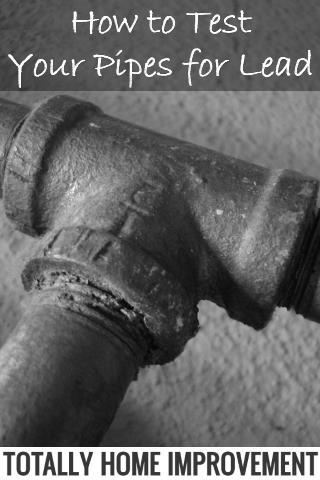
It’s a possible area of risk that may be in your house right now – lead pipes. Lead is a toxic metal that causes harm when it is inhaled or swallowed. While many may be aware of the risk of breathing in lead from lead paint chips and dust, lead used in plumbing fixtures can also transfer the toxin into your water supply.
Kids under the age of six are at the biggest risk of lead exposure. Lead can also do serious harm to pregnant women and nursing mothers. The result can be physical and developmental delays in children.
The presence of lead in plumbing is one of the ways for lead to make its harmful way into our bodies.
According to the Canadian Government, water is one of the three major sources of lead exposure in housing (the other two are soil and paint or paint dust). For plumbing, the major issue is the now-ended use of lead solder used in service connectors to join household plumbing. This practice was done until the late 1980s. Until then, lead solder was the go-to material for use to link plumbing connections, chiefly the water service line connecting your home with the municipal water grid.
To find out if your plumbing has lead in it, try the following steps.
First, check the colour of your pipes
Locate the water meter for your home. Then, examine the colour of the pipe that goes through the home wall and connects with the water meter. Also check the colour of the pipe on the other side of the water meter.
If this pipe is grey, silver or dull in colour, there’s a chance the pipe could be lead. However, if it has the colour of brass, bronze or brown then it’s likely copper.
Scratch with a key
Using a key, scratch both pipes (do this carefully). Examine the colour of the pipe that was exposed by the key scratch. If that colour looks shiny or silver, then odds are the pipe is made of lead. If the colour is bronze, brass or dull in appearance, it’s a copper pipe. And if the inside-pipe colour is grey or dull, it’s likely galvanized iron.
Check for softness
The final step in the at-home lead pipe check is to gently press your fingernail against the pipe. If the pipe is soft – and your fingernail leaves an indentation mark – then chances are the pipe is lead – and pipe replacement should be done immediately.
Flush before drinking
Before drinking, let your water run for a minute or two. This will “flush” out any lead buildup. If it’s been more than six hours since a particular faucet has been used, lead can leach into the water sitting in the service line pipe. You can save water here by flushing the water through showering or running the washing machine.
Consume cold water, not hot
When it comes to drinking water from the tap, or using that tap water for cooking – and especially for concocting baby formulas – use cold water, not hot. That’s because hot water is more likely to carry higher lead levels.
Test your water
Finally, get your home’s water tested. This is the only way to be 100 percent certain of the amount of lead in the water – and if it is past the harm threshold where it becomes a health risk. Check with your local municipality about where you can take a sample of your water to be tested. This is even more so important for those living in big apartment buildings, as flushing the pipes cannot be enough to clear lead-infused water.
You might also like to read:
• The Pros And Cons Of Installing A Water Well In Your Home
Category:




